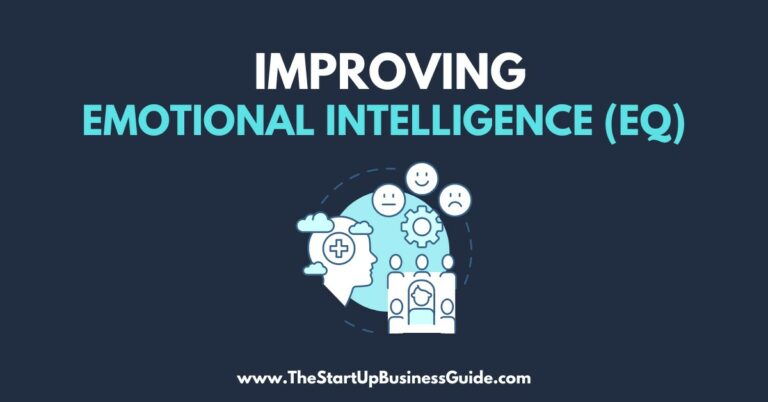What is Active Listening and How to Improve It

Effective communication is a key component in any successful relationship or endeavor.
Whether it’s a personal relationship, a professional setting, or a group project, the ability to truly listen and understand the perspectives of others can make all the difference.
One essential aspect of effective communication is active listening.
In this article, we will define active listening, discuss its importance in communication, and explore various strategies for improving this skill.
What is Active Listening
Active listening is a communication technique that involves fully focusing on, understanding, and responding to the speaker.
It requires that the listener pay attention, show interest, provide feedback, reflect and paraphrase the speaker’s message, and hold back judgement.
Importance of Active Listening in Communication
Active listening is important because it helps to build trust, understanding, and cooperation between individuals.
When we actively listen to others, we demonstrate that we value their thoughts and ideas, and they are more likely to be open and honest with us in return.
In the workplace, active listening can lead to more effective collaboration, problem-solving, and decision-making.
It can also help to defuse conflicts and build stronger relationships.
What are some Active Listening Skills
Here are some of the most popular active listening skills that you need to master:
Paying Attention
The first step in active listening is paying attention.
This means fully focusing on the speaker and giving them your undivided attention.
Put away any distractions, such as your phone or laptop, and make eye contact with the speaker to show that you are engaged.
Showing Interest
Another important aspect of active listening is showing interest in what the speaker has to say.
This can be done by nodding, smiling, or making appropriate facial expressions.
Further, ask clarifying questions or make comments that show you are following along and engaged with the conversation.
Providing Feedback
Providing feedback is an important part of active listening.
This can be done through verbal cues, such as “I understand” or “That makes sense,” or through nonverbal cues, such as nodding or making appropriate facial expressions.
Feedback helps the speaker know that you are listening and understand what they are saying.
Reflecting and Paraphrasing
Reflecting and paraphrasing involves restating the speaker’s message in your own words to ensure that you have understood it correctly.
This can be done by saying something like “So, what you’re saying is…” or “It sounds like you’re saying…”
This not only helps to confirm that you have understood the message, but it also demonstrates that you are actively listening and engaged in the conversation.
Holding back judgement
Active listening also involves holding back judgement and being open to the perspectives of others.
It’s important to avoid interrupting the speaker or dismissing their ideas out of hand.
Instead, try to understand where they are coming from and consider their point of view.
Examples of Active Listening
Here are some examples of Active listening:
In Personal Relationships
Active listening is essential in any personal relationship.
Whether it’s a romantic partner, a friend, or a family member, actively listening to their thoughts and feelings can help to build stronger, more trusting relationships.
In the Workplace
Active listening is also important in the workplace.
It can lead to more effective collaboration, problem-solving, and decision-making.
In a professional setting, active listening can also help to build stronger relationships between colleagues and improve overall productivity.
For example, actively listening to a team member’s concerns or suggestions can lead to new ideas and solutions that might not have been considered otherwise.
In Mediation and Conflict Resolution
Active listening is also an essential skill in mediation and conflict resolution.
When trying to resolve a dispute, it’s important to actively listen to both sides and understand their perspectives.
This can help to defuse tensions and find a mutually beneficial solution.
How to Improve Active Listening
Here are some tips to improve your active listening skills:
Practice
The more you practice active listening, the better you will become at it.
Make a conscious effort to actively listen in your daily interactions and practice the skills outlined above.
Listen to understand, not to respond
When actively listening, focus on understanding the speaker’s message rather than thinking about how you will respond.
This will help you to pay better attention and provide more effective feedback.
Eliminate Distractions
To actively listen, it’s essential to eliminate distractions.
Put away your phone, close your laptop, and make sure you are in a quiet environment where you can fully focus on the speaker.
Be present in the moment
Being present in the moment is essential for active listening.
This means being fully engaged in the conversation and not allowing your mind to wander.
Ask open-ended questions
Asking open-ended questions is another effective strategy for improving active listening.
These types of questions encourage the speaker to share more information and provide deeper insights into their thoughts and feelings.
Conclusion
In this blog post, we’ve defined active listening, discussed its importance in communication, and outlined various strategies for improving this skill.
We’ve also provided examples of how active listening can be used in personal relationships, the workplace, and mediation and conflict resolution.
By implementing active listening in their own lives, readers can improve their communication skills, build stronger relationships, and increase productivity.
For those who wish to learn more about active listening, there are plenty of resources available online.
Some great places to start include books on communication skills, workshops and seminars, and online tutorials.
In conclusion, Active listening is a powerful communication tool that can help you to build stronger relationships, increase productivity, and improve your overall communication skills.






